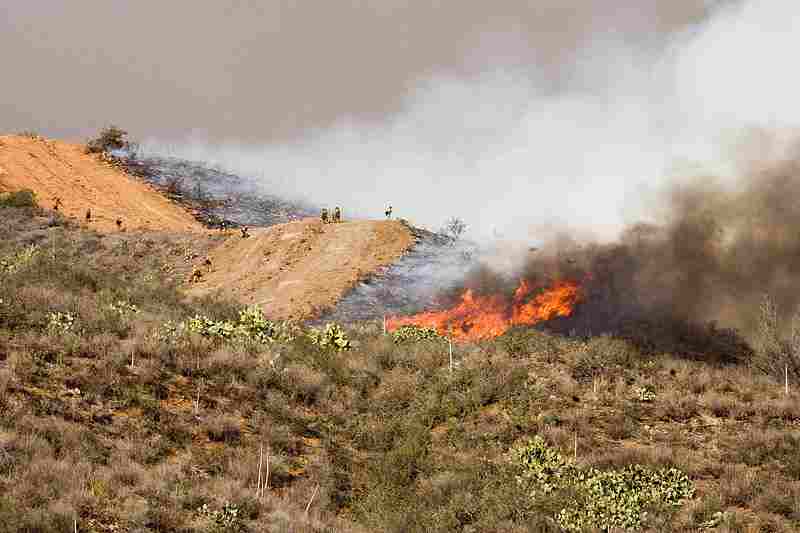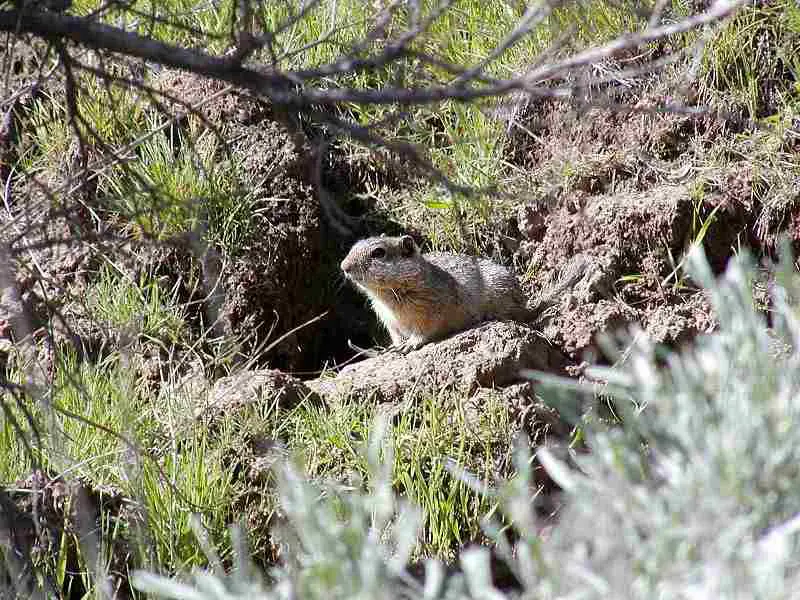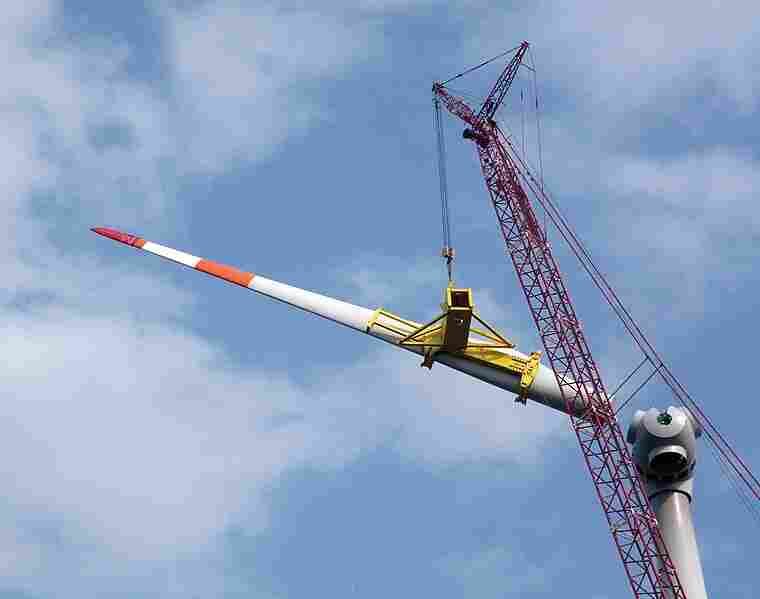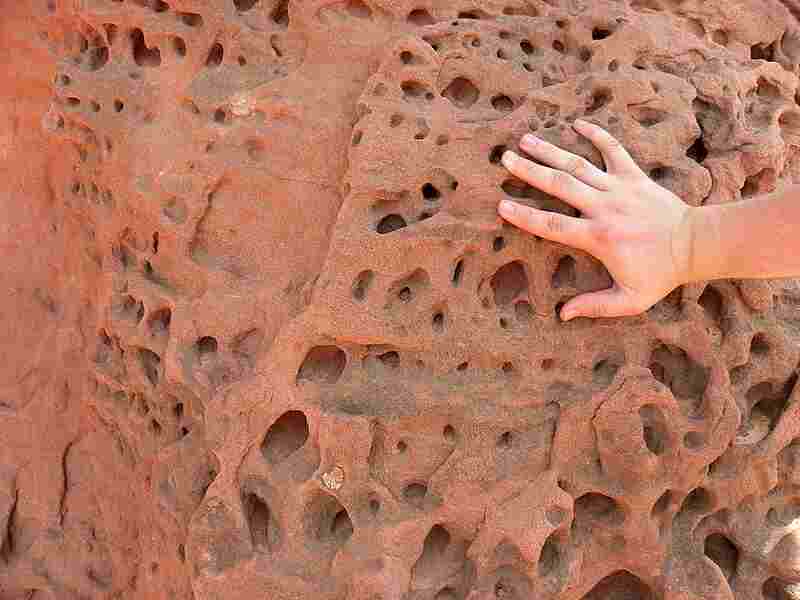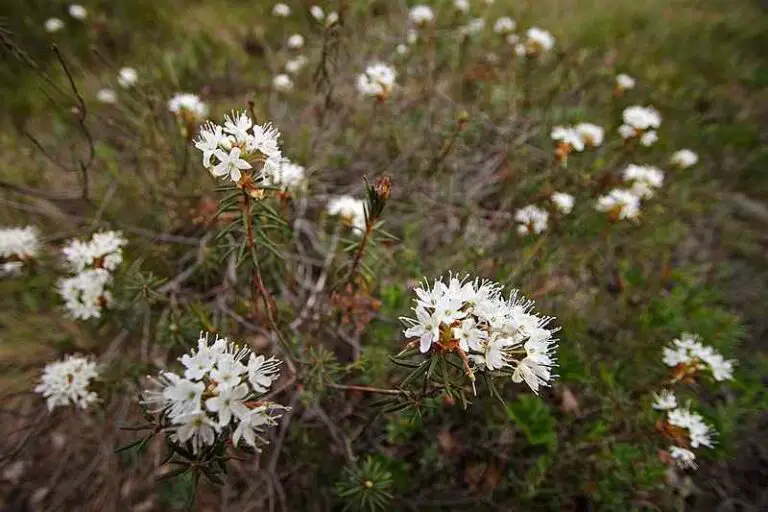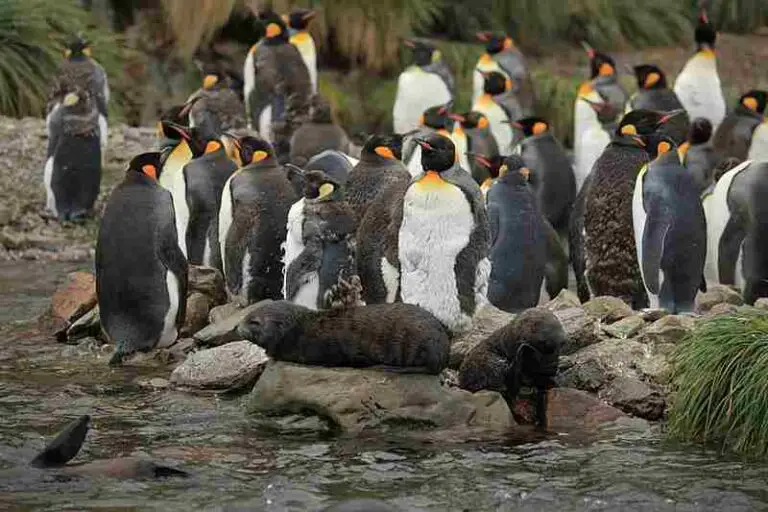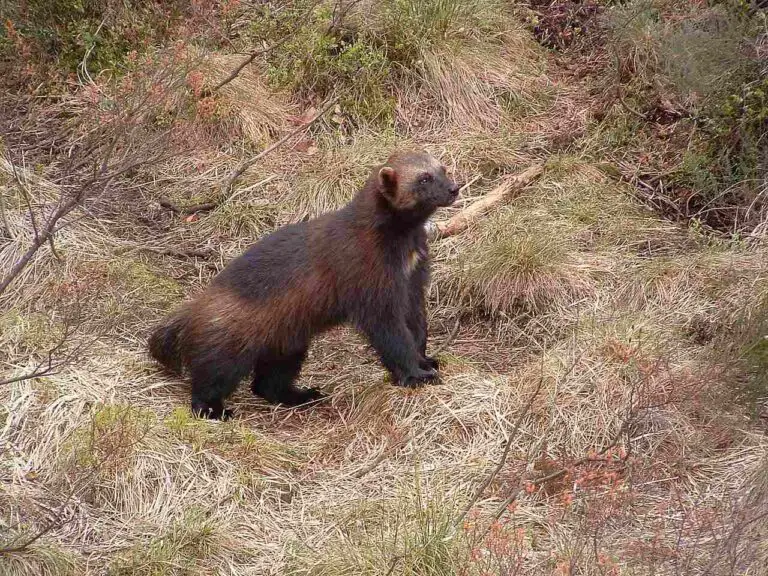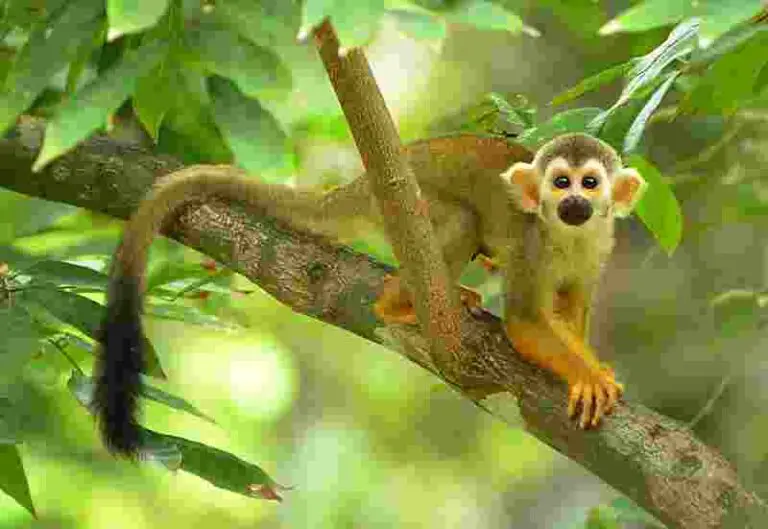9 Chaparral Abiotic Factors and Their Ecologic Importance
Chaparral abiotic factors are; solar radiation, soil, rocks, physicochemical parameters; water, atmospheric gases; wind, nutrients, and climatic conditions.
This article discuses chaparral abiotic factors and their ecologic importance, as follows;
1). Solar Radiation (as one of the Chaparral Abiotic Factors)
Solar radiation is an important abiotic element/factor in the Chaparral ecosystem.
The Chaparral biome is characterized by its Mediterranean climate, whose features include hot and dry summers, that alternate with mild and wet winters [11].
Solar radiation, in the form of light (that is; sunlight), is a major factor that drives several ecological processes within this unique biome.
Relevance of Solar Radiation in the Chaparral
The relevance of solar radiation in the chaparral, can be understood in terms of; energy supply for photosynthesis, temperature regulation, wildfire hazard/regime, water evaporation, ecologic productivity, seasonal dynamics, and influence on biotic factors. They are all discussed in this section.
Solar-electromagnetic radiation, provides the energy required for photosynthesis; which is the process by autotrophic organisms like plants transform sunlight into chemical energy that is stored in biomass.
Chaparral plants, like trees and shrubs, utilize solar energy to produce their own food and support their growth, reproduction, and overall metabolism; all of which have positive ripple effects on the rest of the food chain.

Intense solar radiation in the Chaparral biome contributes to high temperature conditions during the day.
Thermal energy (heat) from the sun can influence the activity and behavioral patterns of both animals and plants.
Several Chaparral plants have developed adaptations that enable them to tolerate high temperatures, while some animals are active mainly during cooler periods, such as dusk and dawn, to elude the daytime heat.
The high temperatures fostered by solar radiation, constitute a critical factor in the natural wildfire regime of the Chaparral biome [5].
The combination of solar heat and dry vegetation, increases the risk of wildfires in this ecosystem. Some Chaparral plants have evolved to tolerate to fire-prone conditions by developing fire-resistant bark, nutrient-storage structures in their roots, or post-fire germination/regeneration mechanisms.
Water evaporation is also driven by solar radiation, which has a role to play in water loss from plants and the soil. In the Chaparral habitat, where water availability is often limited, high levels of solar radiation contribute to the rapid evaporation of moisture from vegetation and soil.
Primary productivity in the Chaparral ecosystem can be traced to the influence of solar radiation, which is a primary driver of photosynthetic processes. The energy captured in the process of photosynthesis, supports the growth of plants, which in turn provide microhabitat and food for various animal species within the ecosystem.
The distinct seasonal variations in the Chaparral biome are influenced by solar radiation patterns. Sunlight availability affects the timing of reproductive processes in plants like flowering and seed production.
Lastly, solar radiation has immense influence on biotic factors like the morphology, interactions and behavior of animals; including their adaptations for feeding, migration, and mating. For instance, some animals may dig burrows or seek vegetative shade during the hottest periods of the day to avoid excessive solar exposure.
2). Soil
As an abiotic factor, plays a critical role in the Chaparral ecosystem.
The conditions of soil in the Chaparral, have major ecological implications for plants, animals, and the overall structure of the ecosystem.
Relevance of Soil in the Chaparral
Ecologic relevance of soil in the chaparral includes its involvement in; nutrient availability, plant adaptation, erosion vulnerability, fire adaptation, and plant distribution.
With regards to nutrient-availability, the soil in the Chaparral biome is typically nutrient-poor [12].
This deficiency in essential nutrients like phosphorus, potassium and nitrogen, affects the growth and vitality of plants.
In order to remain productive, Chaparral plants have generally evolved to tolerate these nutrient limitations, with many plants possessing strategies for conservation and efficient usage of available nutrients.
As stated above, specialized plant adaptations have resulted from the nutrient-poor conditions of soil in the Chaparral. Several Chaparral plant species have developed drought-resistant structures such as deep root systems, water conservative tissues, and small, tough leaves [1].
Such adaptations as these enable them thrive in the arid/semiarid environment while effectively utilizing available resources.
The vulnerability of Chaparral soils to erosion is generally, relatively high.
Chaparral soils are often dusty, dry, and lack a cohesive structure. These attributes increase their susceptibility to erosion, especially by the action of stormwater during heavy rainfall events. The relatively-fine size of the soil particles, combined with the lack of any significant vegetation cover during certain periods of the year, increases the risk of soil erosion and degradation.

The condition and composition of soil in the Chaparral, influence the dynamics and environmental impact, of wildfires. The dry and nutrient-poor soil can create conditions that facilitate rapid spread of fire across the landscape. Some Chaparral plants, including certain shrubs, have developed fire-resistant features as an adaptive response to such hazards, to enable them to survive and regenerate after wildfire events.
Lastly, the quality, composition and type of soil all determine the spatial distribution of plant species within the Chaparral biome. Some zones with slightly deeper of richer soils may support plant communities with higher diversity, while rockier or shallower soils are likely to limit the types of plants that can grow.
Overview of The Properties of Chaparral Soil
Properties of Chaparral soil include; nutrient deficiency, high porosity, rocky substrate, low water retention, and adaptive facilitation. These are discussed as follows.
Nutrient deficiency is a typical property of Chaparral soil, which lacks essential nutrients that are needed for robust plant development.
Chaparral soil is often porous and thin, lacking a well-developed structure, which is the reason for its high erosion-susceptibility.
A relatively-thin layer of rocky or clayey material underlies the layer of soil in a Chaparral, influencing the water-holding capacity of the soil.
Because of its texture and porosity, Chaparral soil possesses low water-holding capacity, which is has significant consequences in an ecosystem with limited water availability.
The limitations of Chaparral soil fosters unique plant adaptations, including water-storage mechanisms and deep root systems.
3). Rocks (as one of the Chaparral Abiotic Factors)
Rocks are another important abiotic factor in the Chaparral ecosystem, and contribute to its characteristic rugged terrain.
The presence of rocks in this ecosystem, influences different ecological processes, affects organic adaptation, and contributes to habitat diversity.
Ecologic Relevance of Rocks in the Chaparral Biome
The importance of rocks to the Chaparral ecosystem as a whole, is based on their contribution to microhabitat creation, temperature regulation, water retention, erosion control, and plant adaptation.
Features of the Chaparral landscape include a rocky terrain with outcrops, rocky slopes and isolated boulders.
These rocky structures create diverse microhabitats that can be used by plants and animals, among other local organisms. Rock crevices, enclosures, assemblages and surfaces, all provide niches for different species to thrive.

Temperature regulation is a function of Chaparral rocks, as they absorb heat in the daytime and release it at night, thereby establishing microclimates that can influence the survival and ecologic performance of both plants and animals.
Organisms may bask on rocky surfaces, or seek shelter in order to regulate their body temperatures.
Rocks can serve as surfaces for condensation of water. In semiarid environments like the Chaparral, where water availability is low, condensation on rocks during cooler periods can provide a crucial water source for soil and living organisms.
Large rocks can help to mitigate soil erosion by serving as a rigid mechanical buffer that reduces the velocity of runoff or wind. They function as natural barriers that protect the soil from displacement by excessive runoff.
Some species of plants in the Chaparral have evolved distinctive adaptations for growth around or among rock masses. These adaptations include anchorage structures and strategies for attachment to rocky surfaces, tolerance of nutrient-scarcity, and allocation of water toward specific parts, like specialized stems and roots.
*How Rock is an Abiotic Factor: Status of Rocks as Components of Ecosystems
An abiotic factor is a non-living/inorganic component of an ecosystem that impact the living organisms (biotic components) and ecological processes occurring within that environment.
Rocks are abiotic factors because they are geological structures composed of inorganic minerals and materials that do not possess the characteristics of living organisms.
In the Chaparral ecosystem, rocks contribute to temperature regulation, habitat diversity, and erosion control among other ecological processes; all of which affect the inhabitants and dynamics of the ecosystem.
4). Physicochemical Parameters
As the name implies, physicochemical parameters are physical and chemical variables that define an ecosystem, and they are critical to the structure, composition, and sustainability of the Chaparral biome.
These abiotic elements influence diverse ecological processes, influence the distribution of organisms, and determine the overall wellbeing of the ecosystem.
Ecologic Relevance of Physicochemical Parameters in the Chaparral
The physicochemical parameters in Chaparral ecosystems include soil moisture, minerals, temperature, and precipitation, among several others. The aforementioned examples are discussed below;
Soil structure refers to the physical configuration/arrangement of soil particles in the Chaparral. It influences aeration/oxygen concentration, nutrient availability and water retention. Under the limited water-supply conditions of the Chaparral, soil structure determines how efficiently plants can access, take-up, and utilize available water.
The amount of water present in the soil directly influences plant survival and growth. Physicochemical parameters related to soil moisture include salinity, pH, and alkalinity [4].
They influence the types of plants that can thrive in the Chaparral ecoregion, as well as their spatial distribution within the ecosystem.
Soil chemical composition determines the availability of essential nutrients for Chaparral plants. In the nutrient-poor soils of this biome, physicochemical conditions of soil impact plant adaptations and growth strategies.
Temperature is a crucial physicochemical parameter that affects metabolism and growth rates, as well as largescale ecological dynamics. In the Chaparral, the temperature regime affects the survival and behavioral strategies of both animals and plants.
The amount, trend and distribution of precipitation directly determine the availability of water in the Chaparral. Precipitation is a climatic physicochemical element that influence the availability of surface water sources, the behavior of animals and the performance of plants.
Overview of Chaparral Physical Properties
Physical properties of the Chaparral ecosystem include varied topography (valleys, slopes, expansive outcrops), rocky terrain, and overall rugged landscapes. These physical properties affect water drainage patterns, create distinct microclimates and microhabitats, and contribute to habitat diversity.
*Abiotic Factors Determining Climate Type
Abiotic factors determining climate type include geographic variables like latitude, altitude, proximity of aquatic ecosystems, waves and ocean current-dynamics, and regional topography.
Latitude can be described as the angular distance of a specific point of location from the equator [3], and influences the type of climate in any given area. Places closer to the equator receive more direct solar radiation and generally have warmer climates, than those farther away from the equator.
Elevation above sea level of a location, affects its temperature. Higher altitude zones are generally cooler than lower altitude zones.
The presence of large water bodies like oceans, in close proximity to an area, can lead to moderation of climatic features like humidity and temperature, and may lead to milder, more stable climatic conditions.
Ocean currents and waves can transport warm or cold water-masses from one geographic zone to another, and may impact the climate of adjacent coastal regions.
Topographical orientation of landforms in an ecosystem, can influence temperature gradients, precipitation patterns and wind currents, in such a manner that leads to diverse microclimates.
5). Water (as one of the Chaparral Abiotic Factors)
Water is a key abiotic factor in the Chaparral ecosystem, with significant influence of biotic dynamics and physicochemical conditions.
Despite being a Mediterranean-type ecosystem with predominant dryness, the Chaparral is still defined by water availability.
Ecologic Relevance of Water in the Chaparral
The ecologic relevance of water in the chaparral can be attributed to its role as a limiting factor, and its involvement in plant adaptation, wildfire dynamics, erosion control, and microclimate variation.
Characteristics of the Chaparral biome include its limited water availability, which features pronounced dry seasons [8]. Water scarcity influences the types, species-richness diversity, and abundance of plants and animals that can thrive in this biome.
Several plants in the Chaparral have developed specific adaptations that enable them cope with water scarcity. These adaptations include; drought-resistant lifecycle patterns/growth strategies, small leaves to reduce transpiration rate, and deep root systems to access moisture in deeper soil layers.
Water shortage in the Chaparral vegetation can be blamed for its susceptibility to wildfire events. Dry plants and soil, provide ample fuel and low resistance for fires, and water availability can determine the risk, intensity and frequency of wildfires in the ecosystem.

Erosion in the Chaparral is directly influenced by water. Moderate water availability can bind soil particles and reduce the effectiveness of agents of erosion like wind; while large water masses (such as those that accompany heavy rainfall) can cause erosion.
Water interacts with biotic factors like plants, whose roots help bind or anchor the soil, and slow down the flow of water across the landscape.
Microclimate creation and variation can be linked to water availability within the Chaparral. Areas with slightly higher availability of water, are likely to support more-diverse and abundant plant communities than drier regions, resulting in a mosaic of habitats.
Water Distribution in the Chaparral Biome
Water distribution in the Chaparral biome is relatively sparse, and restricted to few, ephemeral water bodies like; springs, streams, creeks, lakes and ponds.
While they are relatively rare, creeks and streams do occur within the Chaparral biome. These water bodies are recharged during rainfall events, and provide important habitats, while serving as water sources for both aquatic and terrestrial species.
Springs and seeps are areas of upwelling, where groundwater comes to the surface, to provide a consistent source of water for animals and plants. These features occur in some Chaparral ecoregions, and may act as essential refuges during dry periods.
Seasonal/temporary puddles or ponds may develop in some areas within the Chaparral, after rainfall. These seasonal water bodies serve as breeding grounds for certain species, like amphibians.
Generally, water bodies in the Chaparral are not stable, but tend to dry-up in periods of low precipitation. However, there might be aquatic habitats in Chaparrals, depending on the specific water regime and hydrological configuration of the surrounding landscape.
6). Atmospheric Gases
Atmospheric gases are an important abiotic factor in the Chaparral ecosystem, because of their far-reaching influence on the ecosystem's dynamics.
The mixture of gases in the atmosphere, including nitrogen, carbon dioxide; oxygen, and trace amounts of other gases, is a determinant element in the functioning of this unique biome.
Here, the relevance of atmospheric gases is discussed alongside other important concepts related to the Chaparral; like its environmental sustainability threats, and plant survival strategies.
Relevance of Atmospheric Gases in the Chaparral
The ecologic relevance of atmospheric gases in the Chaparral can be discussed in terms of gas exchange processes, plant growth and survival, carbon sequestration, and organic respiration.
Exchange of atmospheric gases is vital for the process of photosynthesis in Chaparral plants. Carbon dioxide, a major component of the atmosphere, is captured and absorbed by plants during photosynthesis to produce oxygen and sugars [7].
This implies that photosynthesis is an element of the oxygen cycle, which supports respiration and organic survival.
Plant survival, growth and productivity are all linked to the availability of atmospheric carbon dioxide. In the Chaparral, where water availability can be limited, high efficiency of carbon dioxide utilization during photosynthesis, enables plants to maximize their resource use.
Carbon sequestration is another concept that links atmospheric gases to plants in the Chaparral biome. The role of plants in sequestering carbon dioxide from the atmosphere through photosynthesis, can help mitigate the effects of greenhouse gas emissions, and the rate/severity of climate change.
Lastly, atmospheric oxygen is required for the respiration of heterotrophic animals and microorganisms in the Chaparral. It provides the energy required for metabolic processes in these organisms, and enables them contribute to the biome through their presence and activities.
Environmental Threats of Chaparral
Environmental threats of Chaparral ecosystems include; wildfire events, ecological influence of invasive species, urbanization, pollution, and global warming.
Wildfires occur frequently and intensely in may Chaparral regions, due to low water availability, presence of dry vegetation and fire-adaptations of native species. These events and their associated risks/impacts are exacerbated by human activities and climate change.
Invasive, non-native species of plants and animals can outcompete the native species, disrupting the natural balance of the ecosystem and often reducing biodiversity. Since the ecosystem co-evolved with its native inhabitants, such ecological shifts tend to have negative implications for the Chaparral environment.
Urban development and environmental pollution often go together [13], and can take diverse forms including water pollution, habitat fragmentation, air pollution, and increased human-wildlife interactions (which are accompanied by incidents of zoonotic diseases and conflict).

Survival of Plants in the Chaparral Biome
The survival of plants in the Chaparral ecosystem is a result of adaptations like drought-tolerance, fire-resistance/resilience, and distinctive seed dispersal strategies.
Many Chaparral plants possess small leaves, waxy coatings, and/or specialized water-storage tissues to reduce their water loss through transpiration. These are similar to the adaptations of desert plants for drought-tolerance, and enable Chaparral plants to survive the harsh conditions of their habitat.
Some plants in the Chaparral possess seeds that have evolved to require the heat of a wildfire for germination [2]. This ensures their survival and regeneration after a fire event.
Root systems in Chaparral plants are specialized, with significantly-deep reach, to allow these plants gain access water stored in deep layers of the soil.
Plants in the Chaparral have evolved diverse strategies to disperse their seeds, which are aimed to optimize their spread, enhance colonization of land areas, and ensure survival/continuity in different areas.
Sclerophyllous leaves are a feature found in some Chaparral plants for tolerating both fire and drought, as they are tough and possess thick cuticles.
7). Wind (as one of the Chaparral Abiotic Factors)
Wind is an abiotic element in the Chaparral ecosystem, defined by the energetic movement of
The presence of wind plays a crucial role in the characteristics and dynamics of the Chaparral biome.
Ecologic Relevance of Wind in the Chaparral
The ecologic relevance of wind in the Chaparral biome includes its roles in; climate regulation and precipitation, seed dispersal, wildfire propagation, pollination, transpiration, microclimate and temperature regulation.
Wind patterns in the Chaparral biome are influenced by the geographic location of the biome in mid-latitude climates, where westerly winds are prevalent [6]. These winds carry moisture from the oceans, which leads to precipitation in the form of fog or rain.
Fog, in particular, is a critical source of water for many plants in the Chaparral, which have adapted to capture water efficiently from fog droplets.
Seed dispersal is another area where Chaparral wind is relevant.
Wind functions as a key agent for the dispersal of seeds within the Chaparral. Several plants produce lightweight seeds that are adapted for wind dispersal. This mechanism enables the plants to colonize new areas, thereby maintaining genetic diversity.
Fire propagation in the Chaparral is driven by wind, which influences the behavior, intensity, and spreading rate of wildfires. Strong winds can carry embers and supply oxygen that spreads fire rapidly. This in turn affects the structure and composition of the vegetation.
Wind-pollinated plants, also referred to as anemophilous plants [10], depend on the flow of wind currents to transport pollen from one flower to another. Some plants in the Chaparral may possess wind-pollinated flowers.
Transpiration can be accelerated by wind, which influences the release of water vapor from plant leaves. This influence reflects on the water balance of plants, and their overall wellbeing.
Lastly, wind currents can influence the microclimatic conditions of different areas within the Chaparral; including air circulation, humidity and temperature. Wind can help mitigate extreme temperatures through air-mixing.
Challenges and Adaptations Caused by Wind in the Chaparral
While wind is important for various ecological processes, it is also associated with multiple challenges to the organisms and the environment, in the Chaparral.
Challenges and adaptations caused by wind in the Chaparral include; water loss, fire spread, and erosion.
Wind tends to enhance the rate of transpiration in plants, resulting in higher rates of water loss. Many plants have adapted to this challenge by developing small leaves and waxy coatings or thick cuticles, to minimize water loss.
Fire spread is also facilitated by strong, increasing potential damage from wildfires, and adding to the difficulty of firefighting efforts.
Wind can act as an agent of soil erosion, especially in areas where vegetation cover is limited. The fine, nutrient-deficient soil of the Chaparral can be vulnerable to wind erosion.
8). Nutrients
Although their availability of often limited in the Chaparral biome, nutrients play a key role in the sustenance of this unique ecosystem. The cycling and availability of nutrients in the soil, has a significant effect on the growth, interactions; and development of Chaparral organisms.
Relevance of Nutrients in the Chaparral Ecosystem
The ecologic relevance of nutrients in the Chaparral can be traced to plant growth and productivity, species composition, competition, biodegradation and nutrient cycling, and soil fertility.
Plant growth and primary productivity are dependent on the availability of essential elements like phosphorus, potassium and nitrogen, which directly affects the development and photosynthetic capacity of these plants. Nutrient availability influences factors like energy production and photosynthesis rates.
Species composition in the Chaparral biome is also a function of nutrient availability, which determines the types of plants that are able to thrive in the Chaparral biome.
Plants that can adapt to nutrient-poor soils are usually the dominant group, and are ecologically favored over nutrient-demanding species. This has a ripple effect on the species composition of consumers, since they all rely (directly, indirectly) on the plants.
Competition, especially among plant species, is influenced by nutrient availability. Species possessing adaptations for efficient acquisition and utilization of scarce nutrients, are likely to outcompete others, and this affects both organic-community structure and plant diversity.
Decomposition processes are partly responsible for the cycling of nutrients through the Chaparral ecosystem.
Decomposers act on organic matter and cause its breakdown, so that nutrients in such organic materials are released back into the soil, to be subsequently taken up by plants. This cycling dynamic is essential for continuous nutrient supply and maintenance of ecosystem productivity.
Soil fertility is determined by the nutrient content/concentration of the soil.
Nutrient levels affect the ability of plants to access essential elements, impacts their growth rates, seedling establishment, and overall dynamics of the ecosystem.
Overview of Nutrients in the Chaparral Biome
Nutrients in the Chaparral include phosphorus, nitrogen, and potassium; which are limited in availability, so that the soil is generally poor.
Plant growth in this biome therefore relies on the ability of plant species to adapt to the nutrient deficiency and develop strategies for coping, and achieving significant growth.
Challenges and Adaptations Linked to Nutrients in the Chaparral
Plants in the Chaparral possess adaptations for conserving nutrients. These adaptations include diminished parts like leaves, and mycorrhizal associations that enhance nutrient uptake from soil [9].
Decomposers like bacteria and fungi, play a crucial role in the breakdown of organic matter and release of nutrients. Their activity contributes to the recycling of nutrients in the Chaparral biome; and like plants, they are also adapted to the nutrient-deficiency of their habitat.
Several Chaparral plants experience slow growth-rates, partly due to nutrient limitations. Plants in this ecosystem invest their limited resources in a conservative, strategic manner; emphasizing reproduction and survival over rapid growth.
9). Climatic Conditions (as one of the Chaparral Abiotic Factors)
Climatic conditions in the Chaparral biome, feature mild, wet winters and hot, dry summers.
These climatic trends have significant ecological implications for the inhabitant organisms, and overall dynamics of the ecosystem.

Ecological Implications of Chaparral Climate
The ecological implications of Chaparral climate include;
1. Plant and animal adaptation
2. Ecologic resilience
3. Specialized diversity
4 Low Water-Availability
5. Nutrient cycling limitations
6. Impacts on adjacent anthropogenic communities
Conclusion
Chaparral abiotic factors are;
1. Solar Radiation
2. Soil
3. Rocks
4. Physicochemical Parameters
5. Water
6. Atmospheric Gases
7. Wind
8. Nutrients
9. Climatic Conditions
References
1). Ackerly, D.; Knight, C.; Weiss, S.; Barton, K.; Starmer, K..P. (2002). "Leaf size, specific leaf area and microhabitat distribution of chaparral woody plants: Contrasting patterns in species level and community level analyses." Oecologia 130(3):449-457. Available at: https://doi.org/10.1007/s004420100805. (Accessed 8 August 2023).
2). Dias, L. S.; Pereira, I. P.; Dias, A. S. (2019). "Seed Germination in Cistus ladanifer: Heat Shock, Physical Dormancy, Soil Temperatures and Significance to Natural Regeneration." Plants 8(3):63. Available at: https://doi.org/10.3390/plants8030063. (Accessed 9 August 2023).
3). Feustel, O. (2009). "The Holy Alignment: Geodesic and Astronomical Fundamentals for Calculating the Adjustment of Medieval Naves." Nexus Network Journal 11(1):7-21. Available at: https://doi.org/10.1007/s00004-007-0078-2. (Accessed 9 August 2023).
4). Ghare, P. M.; Kumbhar, A. P. (2021). "STUDY ON PHYSICO CHEMICAL PARAMETERS OF SOIL SAMPLE." IARJSET 8(9). Available at: https://doi.org/10.17148/IARJSET.2021.8930. (Accessed 9 August 2023).
5). Miller, J. E. D.; Weill, A.; Villella, J. (2021). "Epiphytic macrolichen communities take decades to recover after high‐severity wildfire in chaparral shrublands." Wiley, Diversity and Distributions 28(9). Available at: https://doi.org/10.1111/ddi.13295. (Accessed 9 August 2023).
6). Mölg, T.; Maussion, F.; Scherer, D. (2014). "Mid-Latitude Westerlies as a Driver of Glacier Variability in Monsoonal High Asia." Nature Climate Change 4(1):68-73. Available at: https://doi.org/10.1038/nclimate2055. (Accessed 9 August 2023).
7). Nevins, D. J. (1995). "Sugars: their origin in photosynthesis and subsequent biological interconversions." American Journal of Clinical Nutrition 61(4 Suppl):915S-921S. Available at: https://doi.org/10.1093/ajcn/61.4.915S. (Accessed 9 August 2023).
8). Paddock, W.; Davis, S. D.; Pratt, R. B.; Jacobsen, A. L.; Tobin, M. F.; López-Portillo, J.; Ewers, F. W. (2013). "Factors Determining Mortality of Adult Chaparral Shrubs in an Extreme Drought Year in California." Aliso 31(1):49-57. Available at: https://doi.org/10.5642/aliso.20133101.08. (Accessed 8 August 2023).
9). Phillips, M. L.; Aronson, E.; Maltz, M.; Allen, E. B. (2019). "Native and invasive inoculation sources modify fungal community assembly and biomass production of a chaparral shrub." Applied Soil Ecology 147:103370. Available at: https://doi.org/10.1016/j.apsoil.2019.103370. (Accessed 9 August 2023).
10). Regal, P. J. (2003). "Pollination by Wind and Animals: Ecology of Geographic Patterns." Annual Review of Ecology and Systematics 13(1):497-524. Available at: https://doi.org/10.1146/annurev.es.13.110182.002433. (Accessed 9 August 2023).
11). Rundel, P. W. (2018). "California Chaparral and Its Global Significance." Valuing Chaparral (pp.1-27). Available at: https://doi.org/10.1007/978-3-319-68303-4_1. (Accessed 8 August 2023).
12). Sardans, J.; Penuelas, J. (2013). "Plant-soil interactions in Mediterranean forest and shrublands: Impacts of climatic change." Plant and Soil 365(1-2). Available at: https://doi.org/10.1007/s11104-013-1591-6. (Accessed 8 August 2023)..
13). Uttara, S.; Bhuvandas, N.; Aggarwal, V. (2012). "Impacts of urbanisation on environment." Available at: https://www.researchgate.net/publication/265216682_Impacts_of_urbanisation_on_environment. (Accessed 8 August 2023).
